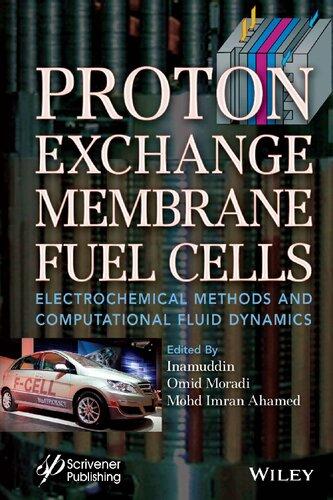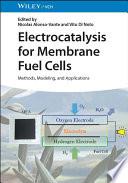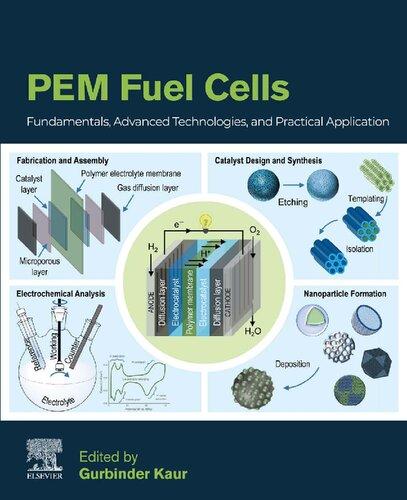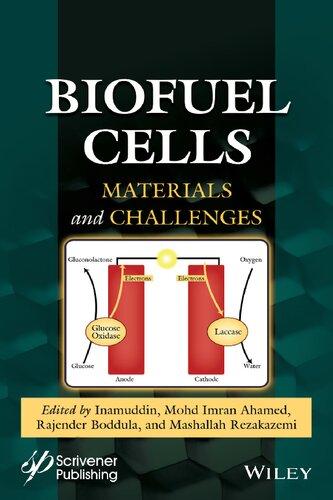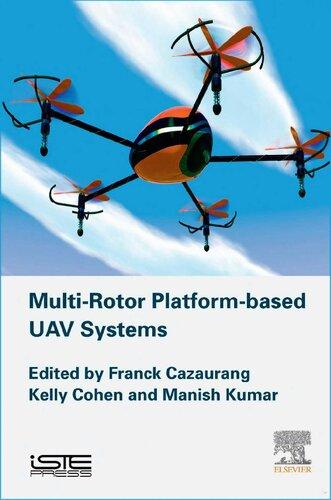https://ebookmass.com/product/proton-exchange-membrane-fuel-
Instant digital products (PDF, ePub, MOBI) ready for you
Download now and discover formats that fit your needs...
Electrocatalysis for Membrane Fuel Cells: Methods, Modeling, and Applications Nicolas Alonso-Vante
https://ebookmass.com/product/electrocatalysis-for-membrane-fuelcells-methods-modeling-and-applications-nicolas-alonso-vante/
ebookmass.com
PEM Fuel Cells Gurbinder Kaur
https://ebookmass.com/product/pem-fuel-cells-gurbinder-kaur/
ebookmass.com
Biofuel Cells: Materials and Challenges Inamuddin
https://ebookmass.com/product/biofuel-cells-materials-and-challengesinamuddin/
ebookmass.com
Problems and Solutions in Organic Chemistry Part 1 upto Page 240 Aliphatic and Alicyclic Amines Nitriles etc by Subrata Sen Gupta Oxford IIT JEE Olympiad Subrata Sen
Gupta Oxford
https://ebookmass.com/product/problems-and-solutions-in-organicchemistry-part-1-upto-page-240-aliphatic-and-alicyclic-aminesnitriles-etc-by-subrata-sen-gupta-oxford-iit-jee-olympiad-subrata-sengupta-oxford/ ebookmass.com
After the Lights Go Down Donna Hill
https://ebookmass.com/product/after-the-lights-go-down-donna-hill-2/
ebookmass.com
Workbook in Practical Neonatology 6th Edition Edition
Richard A. Polin
https://ebookmass.com/product/workbook-in-practical-neonatology-6thedition-edition-richard-a-polin/
ebookmass.com
Social Psychology 1st Edition – Ebook PDF Version
https://ebookmass.com/product/social-psychology-1st-edition-ebook-pdfversion/
ebookmass.com
Multi-rotor Platform Based UAV Systems 1st Edition Franck Cazaurang
https://ebookmass.com/product/multi-rotor-platform-based-uavsystems-1st-edition-franck-cazaurang/
ebookmass.com
The Nanny and the Beefcake (Nanny Love Match Book 3)
Krista Sandor
https://ebookmass.com/product/the-nanny-and-the-beefcake-nanny-lovematch-book-3-krista-sandor/
ebookmass.com
Gray Court (Black Hat Bureau Book 7) Hailey Edwards
https://ebookmass.com/product/gray-court-black-hat-bureaubook-7-hailey-edwards/
ebookmass.com
Scrivener Publishing
100 Cummings Center, Suite 541J Beverly, MA 01915-6106
Publishers at Scrivener
Martin Scrivener (martin@scrivenerpublishing.com)
Phillip Carmical (pcarmical@scrivenerpublishing.com)
This edition first published 2023 by John Wiley & Sons, Inc., 111 River Street, Hoboken, NJ 07030, USA and Scrivener Publishing LLC, 100 Cummings Center, Suite 541J, Beverly, MA 01915, USA © 2023 Scrivener Publishing LLC
For more information about Scrivener publications please visit www.scrivenerpublishing.com.
All rights reserved. No part of this publication may be reproduced, stored in a retrieval system, or transmitted, in any form or by any means, electronic, mechanical, photocopying, recording, or otherwise, except as permitted by law. Advice on how to obtain permission to reuse material from this title is available at http://www.wiley.com/go/permissions.
Wiley Global Headquarters
111 River Street, Hoboken, NJ 07030, USA
For details of our global editorial offices, customer services, and more information about Wiley products visit us at www.wiley.com.
Limit
of Liability/Disclaimer of
Warranty
While the publisher and authors have used their best efforts in preparing this work, they make no representations or warranties with respect to the accuracy or completeness of the contents of this work and specifically disclaim all warranties, including without limitation any implied warranties of merchantability or fitness for a particular purpose. No warranty may be created or extended by sales representatives, written sales materials, or promotional statements for this work. The fact that an organization, website, or product is referred to in this work as a citation and/or potential source of further information does not mean that the publisher and authors endorse the information or services the organization, website, or product may provide or recommendations it may make. This work is sold with the understanding that the publisher is not engaged in rendering professional services. The advice and strategies contained herein may not be suitable for your situation. You should consult with a specialist where appropriate. Neither the publisher nor authors shall be liable for any loss of profit or any other commercial damages, including but not limited to special, incidental, consequential, or other damages. Further, readers should be aware that websites listed in this work may have changed or disappeared between when this work was written and when it is read.
Library of Congress Cataloging-in-Publication Data
ISBN 9781119829331
Front cover images supplied by Wikimedia Commons
Cover design by Russell Richardson
Set in size of 11pt and Minion Pro by Manila Typesetting Company, Makati, Philippines Printed in the USA 10 9 8 7 6 5 4 3 2 1
5.6
7.2.4
7.3
7.5
7.6
7.6.1
7.7
11
Sulfonated Poly(Arylene Ether Sulfone) (6FBPAQSH-XX)
Poly(Aryl Ether Sulfone) Membranes
Sulfonated Oligomer (c-SPFAES)
9.12 Sulfonated Poly(Arylene Biphenylether Sulfone)Poly(Arylene Ether) (SPABES-PAE)
Santiago Pablo Fernandez Bordín, Janet de los Angeles Chinellato Díaz and Marcelo Ricardo Romero
13
Preface
Proton exchange membrane fuel cells (PEMFCs) are among the most awaited near-future stationary clean energy devices just next to rechargeable batteries. Despite the appreciable improvement in their cost and durability, which are the two major commercialization barriers, our ambition has not yet reached at par mainly due to the use of expensive metal-catalyst, less durable membrane, and poor insight into the ongoing phenomena inside the PEMFCs. Efforts are being made to optimize the use of precious metals of platinum as catalyst layers or find alternatives that can be durable for more than 5,000 h. The computational models are also being developed and studied to get an insight into the shortcomings and get a remedy. The announcement by various companies including Toyota for PEMFC-based cars by 2025 has accelerated the current research on PEMFCs. A breakthrough is urgently needed. The membranes, catalysts, polymer electrolytes, and, especially, the understanding of diffusion layers need thorough revision and improvement to achieve the target.
Proton Exchange Membrane Fuel Cells: Electrochemical Methods and Computational Fluid Dynamics is intended to present experimental and computational techniques that are used to understand the phenomena inside the PEMFCs. The latest potential materials for electrode and membrane application, which are currently under active research, are thoroughly covered. The PEMFC electrolyte needs to be solid as the portable application of hydrogen is too risky. The literature on polymer electrolytes has developed recently. Some chapters are devoted to understanding these electrolytes, their shortcomings, and potential improvements. Further, the successful computational fluid dynamics models are discussed to help the reader understand diffusion phenomena that cannot be understood analytically. This book should be useful for engineers, environmentalists, governmental policy planners, non-governmental organizations, faculty, researchers, students from academics, and laboratories that are linked directly or indirectly to PEMFCs, for most awaited near-future stationary
clean energy devices. Based on thematic topics, the book edition contains the following 13 chapters:
Chapter 1 is intended to represent an overview of stationary and portable applications of PEMFCs. Hydrogen, alcohol, and microbial cells are presented for existing applications. Besides, the applications of micro fuel cells are included, the challenges and promising applications of each cell are also offered.
Chapter 2 discusses the use of graphene oxide as a proton exchange membrane material. The application of modified graphene oxide membranes in fuel cells to enhance proton conductivity is reported in detail. Methods to synthesize graphene oxide membranes and techniques to characterize are discussed in light of research experiments.
Chapter 3 discusses the recent trend of graphene and its nanocomposites in the modifications of membrane-based fuel cells. The understanding of graphene features, prospects of graphene nanocomposites as membranes for fuel cell technology, and their influence on the performances of PEMFCs are also presented.
Chapter 4 discusses the carbon nanotube–based membranes for PEMFCs. In addition, the role of carbon nanotube toward PEMFCs is discussed. Various reported research papers, are reviewed and their mechanism and efficiency are also discussed.
Chapter 5 presents diverse nanoadditives and polymer matrices utilized in nanocomposite proton exchange membrane preparation for fuel cells. Thermal stability, chemical stability, and water uptake capacity of membranes are discussed in detail. The major focus is given to the proton conductivity of nanocomposite membranes with a change in percentage composition of nanoadditives.
Chapter 6 discusses various research progress and achievements of inorganic-organic composite membranes for PEMFCs. The major focus has elucidated the characteristics, advantages, design principles, and the relationship between various inorganic fillers and the properties of composite proton exchange membranes. The future development direction has also prospected.
Chapter 7 overviews the present research studies being performed on thermoset composites for bipolar plate applications. The influence of different conductive fillers and parameters of manufacturing methods on the properties of thermoset-based composite bipolar plates is discussed in detail. This chapter also includes theories of electrical conductivity and the characterization of polymer composite-based bipolar plates.
Chapter 8 discusses various design strategies of metal-organic frameworks for the PEMFCs and their performance in different matrices. This chapter mainly focuses on the advantages, limitations, and future applicability of the existing designs of metal-organic frameworks described in the literature.
Chapter 9 focuses on research in proton exchange membrane material based on fluorinated polymers. The preparation process, synthetic protocols, and properties of the various fluorinated membrane materials to achieve the effective compatibility of fuel cells are discussed. Special attention is given regarding the synthesis of fluorinated poly(aryl ether sulfone) membranes cross-linked sulfonated oligomer as the potential membrane in the construction of PEMFCs.
Chapter 10 discusses various categories of PEMFC materials, and advantages, disadvantages, and performance of each proton exchange membrane preparation method are considered in detail. The definition of a fuel cell, classifications, historical background, and its applications are explained. The critical parameters to characterize them also are discussed.
Chapter 11 details the properties of the Nafion membrane, which is the most widely used and researched proton exchange membrane. Throughout this chapter, the more relevant structural and transport models are exhaustively discussed and connected with the operation improvement of fuel cells. In addition, relevant results from different studies and authors are summarized.
Chapter 12 discusses the basics of fuel cells and their types. In addition, their working principle and application are also discussed in detail. The main focus is given to communicate the PEMFCs and the type of solid polymer electrolyte membranes along with their applications.
Chapter 13 focuses on CFD simulation and mathematical modeling of transport phenomena in PEMFCs. The effects of flow field configuration and operating parameters on PEMFCs performance are discussed. Different software and codes like ANSYS Fluent, COMSOL, lattice Boltzmann, and OpenFOAM to simulate PEMFCs are reviewed.
Highlights:
• Introduces the readers and professionals with the details of the basics, working principles, and applications of fuel cells
• Explores the features and applications of graphene oxide as proton exchange membrane material
• Focuses on progress, applications, mechanisms, and efficacy of different types of PEMFCs
Stationary and Portable Applications of Proton Exchange Membrane Fuel Cells
Shahram Mehdipour-Ataei* and Maryam Mohammadi
Faculty of Polymer Science, Iran Polymer and Petrochemical Institute, Tehran, Iran
Abstract
Proton exchange membrane fuel cells (PEMFCs) have been extensively evaluated for transportation applications due to the advantages such as lightweight, fast start-up, and zero emission. Some commercial products are also now being used worldwide. Moreover, because of the increasing advancement of technology and the integration of human life with new electronic technologies as well as the Internet, there is a growing trend for alternative or auxiliary sources of power for battery systems and portable devices. In addition, the requisite sources of power in areas that are remote and suffer from energy shortages are the other challenge. PEMFCs are the future vision for powering stationary and portable resources from massive power plants to cell phones. This chapter presents a variety of stationary and portable applications of PEMFCs, including hydrogen, alcohol, microbial, and micro fuel cells. Each section presents applications, achievements, and challenges. Finally, the prospects for the development of these technologies as reliable and applicable sources in the real world are presented.
Keywords: PEM fuel cell, applications, portable, stationary, hydrogen fuel cell, methanol fuel cell, microbial fuel cell, micro fuel cell
1.1 Introduction
Because of the zero or very low emission, proton exchange membrane fuel cells (PEMFCs) are promising in transportation. The first commercial application of these technologies in transportation may be urban buses.
*Corresponding author: s.mehdipour@ippi.ac.ir
Inamuddin, Omid Moradi and Mohd Imran Ahamed (eds.) Proton Exchange Membrane Fuel Cells: Electrochemical Methods and Computational Fluid Dynamics, (1–16) © 2023 Scrivener Publishing LLC
The Scania hybrid bus is an example of this technology. In addition, fuel cells are applicable in any energy-driving device. The power of less than 1 W to several megawatts can be supplied by this technology due to the modularity, static nature, and variety. These features make a fuel cell a substitute for conventional heat engines used for transportation and power generation. Fuel cells are also an integral part of future technologies for energy conversion and storage, along with electrolyzers, batteries, flow systems, and renewable energy technologies. Lack of global market, high capital, high cost of components, and durability are the limiting factors of the mass market. However, Toyota, Hyundai, Honda, and others have commercialized their own products. Thus, the widespread usage of this technology has been made possible bypassing fossil fuel–powered to fuel cell–powered vehicles. Moreover, the use of fuel cells in US space programs continues, and PEMFCs are also considered for this purpose [1–11].
Fuel cell applications can be considered into three groups: portable, stationary, and transportation.
Low-temperature fuel cells are fit for portable and emergency power due to the short heating time. Portable fuel cells perform in the power range of 5–500 watts. Some examples of portable applications of PEMFCs in realworld include portable power generators for light personal usage in camping, continuous power systems, portable power sources as a replacement for batteries in laptops, computers, cell phones, radios, cameras, military electronics, boats, scooters, toys, kits, home lighting, emergency lights, and chargers.
Fuel cells can also regareded for stationary power generation including in the residential, commercial, and industrial sectors. In addition, by using fuel cells that operate in the range of medium to high temperature, the use of excess generated heat increases the overall efficiency and offers useful power for heating domestic water and space. A static power range of 1–50 MW can be supplied by PEMFCs. In telecommunication applications as an example of small-scale stationary power, the power range is 1–100 kW. Some applications of PEMFCs for stationary power supply include emergency backup (EPS) or uninterruptible power supply (UPS) for telecommunication networks, airports, hospitals, and training centers; remote or local power supply for small villages, buildings, and military camps; micro fuel cells, combined heat and power generation (CHP), and power regulation systems, in which surplus electricity is stored to hydrogen by electrolysis of water and converted into electricity when needed.
Transportation applications of PEMFCs include diverse types of trucks, buses, automobiles, motorcycles, bicycles, golf vehicles, service vehicles, boats, submarines, aircraft, and locomotives [3, 11–18].
Fuel cell applications can be also classified on the basis of a special need or removing a problem. High reliable power (computer equipment, communication facilities, and call as well as data processing centers), emission reduction or elimination (vehicles, industrial facilities, airports, and areas with severe emission standards for greenhouses), limited access to the electricity grid (rural or remote areas), and the availability of biogas (waste treatment plants and conversion of waste gases into electricity and heat with slight environmental impact by fuel cells) are in this classification [19].
The leading countries in the development of fuel cells include United States, Germany, Japan, Canada, and South Korea [18].
1.2 Proton Exchange Membrane Fuel Cells
PEMFCs are the most common types of fuel cell technology that are the focus of studies. The high power density, fast start-up, low manufacturing cost, long lifetime, flexibility, and widespread use in portable devices, transportation, and stationary applications are the superior characteristics of these types of cells compared to other types of fuel cells. About 90% of research studies and developments in fuel cells are in the field of PEMFCs; low operating temperatures and, therefore, reduced heat loss, small size, and lightweight make them suitable for automotive and transportation applications. They are a good choice for powering buses and commercial hydrogen vehicles as well. Polymer electrolyte membrane fuel cells have also been developed as a suitable replacement for existing batteries.
One of the most well-known research centers of PEMFCs is Los Alamos National Laboratory (LANL), which has released valuable achievements. In addition, renewable energy laboratories all over the world are representing their new successes every day [11, 17, 20–24].
1.2.1 Stationary Applications
In the early 1990s, according to the attained results from the performance and cost of PEMFCs for transportation applications, these types of cells were considered stationary, albeit with limited heat output.
Polymer electrolyte membrane fuel cells are capable of producing power in the range of a few watts to hundreds of kilowatts. Thus, these cells are applicable in almost any application that requires local power, including backup, remote, and uninterruptible power supply. The stationary application of PEMFCs includes decentralized power generation at the scale of 50–250 kW or less than 10 kW. However, it is required to focus on the
small power range of 1–5 kW in the UPS or auxiliary power unit systems to be used for medium or large appliances for stationary applications [14, 24–27].
The distributed power of PEMFCs is usable for stationary applications in a variety of locations. Some of the applications include the main power source for areas where there is no access by the grid, supplementary power supply that operates in parallel with the power grid, supplementary power supply in renewable energy systems like photovoltaic and wind turbines, and emergency generators to remove power grid faults. Initial ages of stationary PEMFCs were designed for the residential power supply to use the generated heat for domestic, which significantly increases efficiency. A 250-kW stationary unit developed by Ballard Generation that runs on natural gas; other types that work with propane, hydrogen, or anaerobic digestion gas have also been designed and fully established. Besides, prototype units have been successfully achieved in the United States, Japan, and Europe [11, 13, 14, 16, 24, 25, 28, 29].
The backup power market for banks, hospitals, and telecommunications, in which there is a need for reliable power sources to prevent unexpected power downfall that causes very high cost, has attracted a lot of attention. Nonetheless, the high cost of PEMFCs is still an obstacle limits the global usage of stationary applications. Nonetheless, several commercial units such as CHP GenSysTM Blue Plug Power, Ballard FCgenTM 1020 ACS, and Ballard FCgen 10 -1030V3 fuel cell systems have been established in several places [11, 12, 14, 15].
The CHP GenSysTM fuel cell system has been installed in New York State for domestic. Ballard Power System is also available for use on telecommunication tower sites in India and Denmark to provide backup power. Besides, a model project was carried out in 2008 in Japan for the installation of ENE FARM class residential fuel cell. Small stationary units with a power of less than 10 kW were also installed for domestic usage, uninterruptible power supply, and backup power in commercial and remote locations [11, 16, 28].
Among the numerous successful projects, the Ballard Generation system is the largest plant to date. The output power of this plant is 250 kW. This PEMFC system is powered by natural gas and can be efficiently used as a backup source for emergency facilities such as hospitals. Moreover, these units produce large quantities of excess heat and hot water. These products are commonly used by the surrounding society and thus improve the efficiency [7].
The infrared effects of fuel cells like in submarines are very attractive for military applications. Many prototypes of this type have been successfully tested recently [7, 30].
The production of ammonia and direct regenerated iron are other stationary applications of fuel cell technology. By direct regenerated iron fuel cells, global production has grown significantly, which supply the present demand of hydrogen in refineries [7].
1.2.2 Portable Applications
Because of the limited capacity of batteries and the growing demand for energy for modern portable devices including laptops, mobile phones, and military radios, PEMFC systems have the potential to be supplemented or replaced with batteries. Thus, PEMFCs will serve as a vision for portable power supply. Portable systems working by PEMFC get into two main applications based on the generated power. The cells with below 100 W are applicable as substitute for battery, and the ones with more than 1 kW are suitable for portable generators [7, 11, 14, 31].
In hydrogen PEMFCs, providing safe hydrogen is a challenge. To this end, hydrogen is used as a liquid fuel for portable applications. On the other hand, compressed hydrogen is a practical answer for transportation, but it is not fit for portable devices due to the low volume energy density and storage space. In addition, carrying hydrogen is not possible. The replacement of liquid or solid fuels is a suggested solution; however, it requires a fuel refining process, which complicates systems. Direct methanol fuel cell (DMFC) is promising for portable applications. Nevertheless, the practical application of DMFCs is prevented by the low performance and high methanol crossover. Direct borohydride fuel cell is another potential system for portable applications. However, the high cost of borohydride and the purification of by-products while performing are the obstacles. Most importantly, the rapid development and success of lithium-ion (Li-ion) battery technology in powering laptops, cell phones, etc., is the remaining challenge that must be considered [26, 27, 31].
A number of large companies including Sony, Toshiba, Motorola, LG, Samsung, SFC Smart Fuel Cell, Samsung DSI, Neah power systems, MTI micro, Horizon, Jadoo power systems, Viaspace/Direct Methanol Fuel Cell Corporation, and CMR fuel cells have their own research and development units in portable PEMFCs [11].
DMFC to Li-ion batteries for a 20-W laptop computer with a lifespan of 3,000 h in Korea. The total cost was 140 and 362 $ for the battery and DMFC, respectively. The high fuel consumption arisen from the loss of methanol by crossover is the reason of high price of DMFC. Therefore, the necessity of competition of DMFCs with Li-ion batteries includes reducing methanol crossover and price to 10−9 times and less than 0.5 $/kg, respectively. Under these circumstances, if the cost of DMFC production drops to 6.30 $/watt, then the DMFC will be reasonable compared to the Li-ion battery. On top of that, the regulations recently prohibited the use of highly flammable methanol on airline flights that must be cared for [14, 26, 27].
Lawrence Livermore National Laboratory, Battelle, Casio, and Ultracell are some manufacturers of DMFCs. In addition, many companies of fuel cell technology such as Antig, DMFC Corp., DTI energy, Energy Visions Inc., INI Power, MTI Micro Fuel Cells, Neah Power, Plug Power, and Smart Fuel Cell as well as communications and electricity companies like Fujitsu, IBM, LG, Motorola, NTT, Sanyo, Samsung, Sony, and Toshiba have introduced a variety of DMFC prototypes as laptop power supplies. These diverse products of companies compete with each other in weight, dimensions, power output, and concentration of methanol. The total volume of the system is one of the most important commercialization factors of DMFC prototypes for laptops, which determines power density, energy density, and the concentration of methanol solution. To gain an effective integration of DMFC system with laptop computers for optimizing power output level and operating time, Toshiba and NEC have embedded the power supply on the below back of the laptop computer. In reverse, the laptop lens was selected as the location of power supply in the prototypes by Sanyo and Samsung Electronics. Despite the successes in introducing DMFC systems for laptops, commercialization has been delayed due to the methanol ban on airplanes and high production cost, which is at least 10 times higher than Li-ion batteries [26, 27, 33].
DMFC is the smallest fuel cell, which can be developed due to the possibility of direct injection of fuel, air-breathing, and low operating temperature. Therefore, this type of fuel cell is actually a good technology for portable generators. However, DMFC currently cannot meet the power generation needs of many real portable applications [14].
1.2.4.2 Direct Dimethyl Ether Fuel Cell
Significant efforts have been made to find alternative fuels for PEMFCs to power portable energy systems. Because there are safety and technical barriers about using hydrogen and methanol. Hydrogen PEMFCs have a
high power density due to the simplicity of the hydrogen molecule and its ease of oxidation. However, hydrogen suffers from problems related to low storage density, production, and infrastructure. Becaue of the more simplicity of DMFC compared to hydrogen cell, it better fits for portable applications. Performance loss of DMFC compared to hydrogen PEMFC is accepted against the easy storage and density of methanol. However, fuel storage density and toxicity of methanol are DMFC drawbacks for portable applications. Methanol is toxic when ingested or inhaled excessively, disperses rapidly in groundwater, has a colorless flame, and is more corrosive than gasoline. In this way, direct dimethyl ether polymer electrolyte fuel cell (DMEFC) has been proposed for portable applications. Dimethyl ether is a potential fuel for direct oxidation cells due to the combination of the benefits of hydrogen (pump-free feed) and methanol (high energy density storage). DMEFC stacks are currently larger than DMFC equivalents; however, the absence of a pump and lower toxicity compared to methanol significantly reduces size, weight, and complexity of the system [34].
1.2.5 Microbial Fuel Cells
Bioelectrochemical fuel cell systems with polymer membranes are another type of fuel cell in which electrochemically active microorganisms catalyze reactions. Although much research is still needed, the emerging microbial electrochemical field has a good potential to compete with modern technologies. The main drawback of microbial fuel cells (MFCs) is the lack of sufficient energy production. The expensive electrode, membrane, and cathode catalyst are also other limitations.
In addition to electricity generation, microbial fuel cells have many under investigation applications in wastewater treatment, water desalination, removal and recovery of metals, production of hydrogen in electrolysis cells, remote biosensors, elimination of pollutants, production of chemicals and fuel, and recovery of solar energy.
The application of MFCs as energy sources of spacecraft has been reported that is a validation of the applicability of these devices for practical usage. The maximum power density of MFCs is 2–3 W/m2 under a suitable buffer and the temperature of about 30°C [12, 14, 15, 35–39].
1.2.5.1 Electricity Generation
The primary application of MFC technology is bioelectricity generation. The reports of cell phone charging by generated power from a MFC stack is a validation to this application. Regarding the low power output and the

